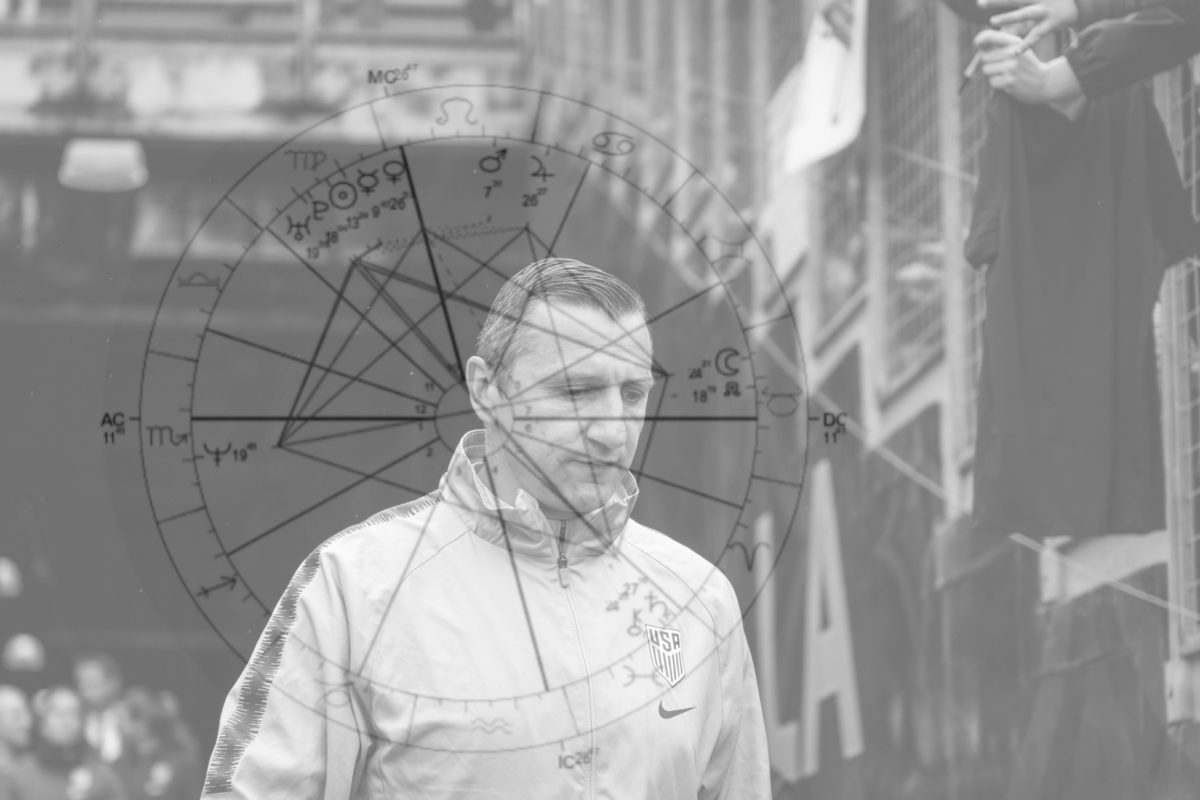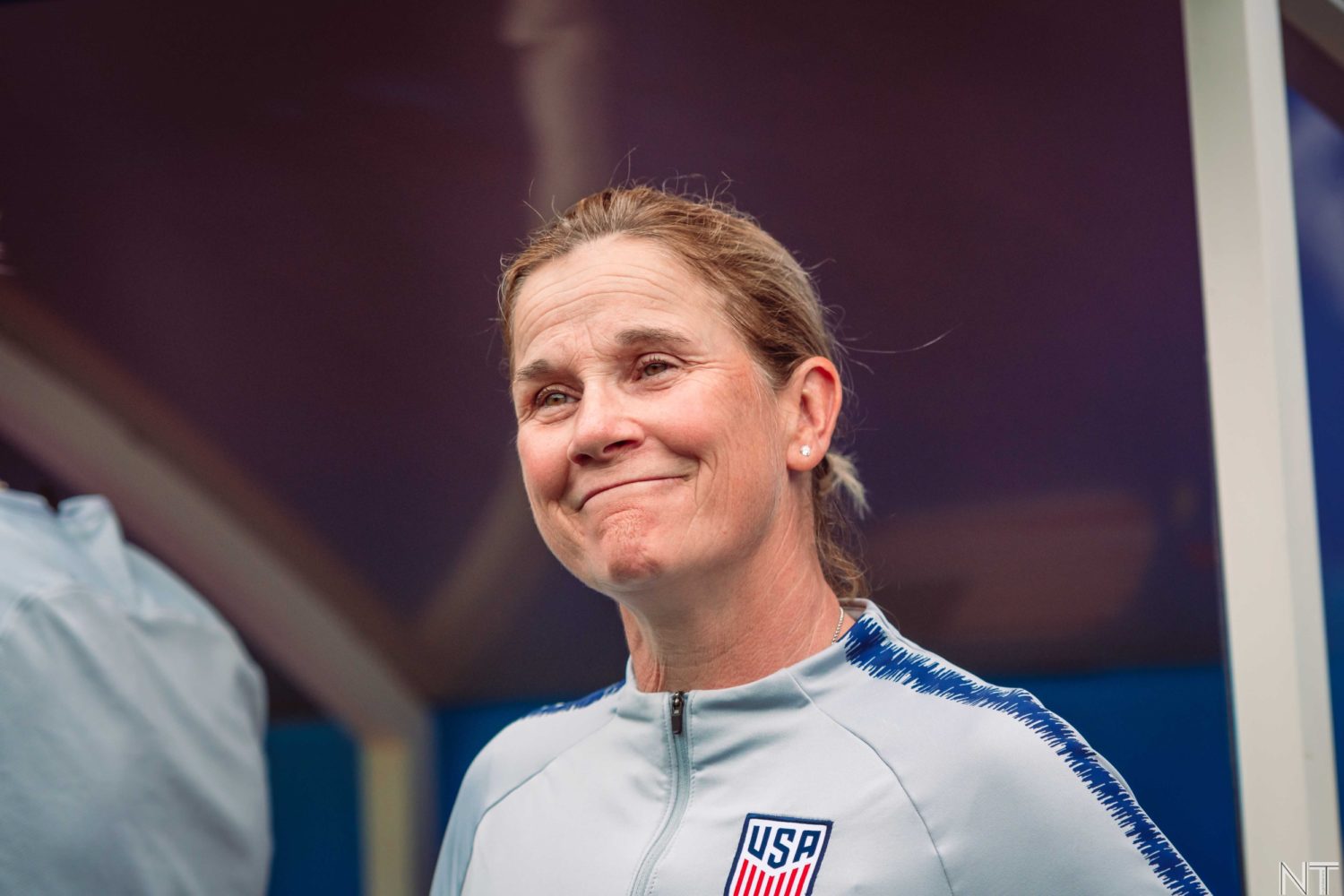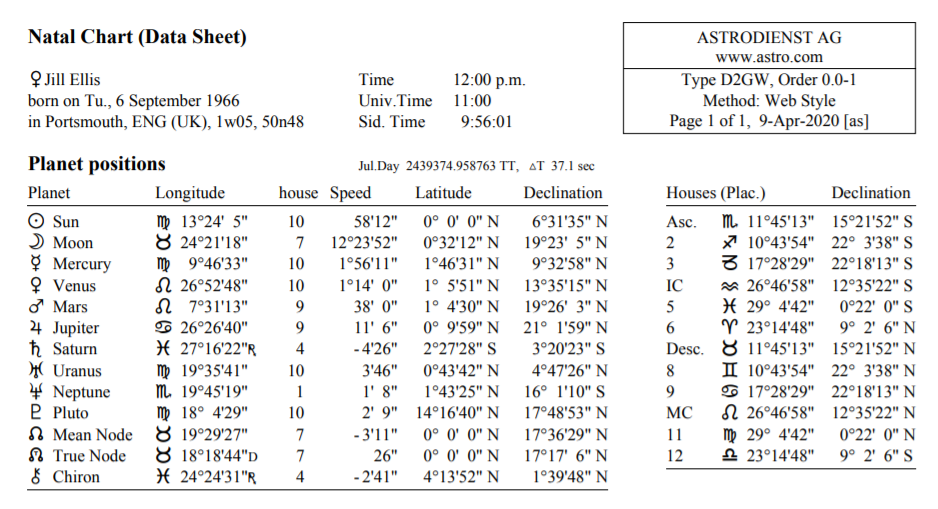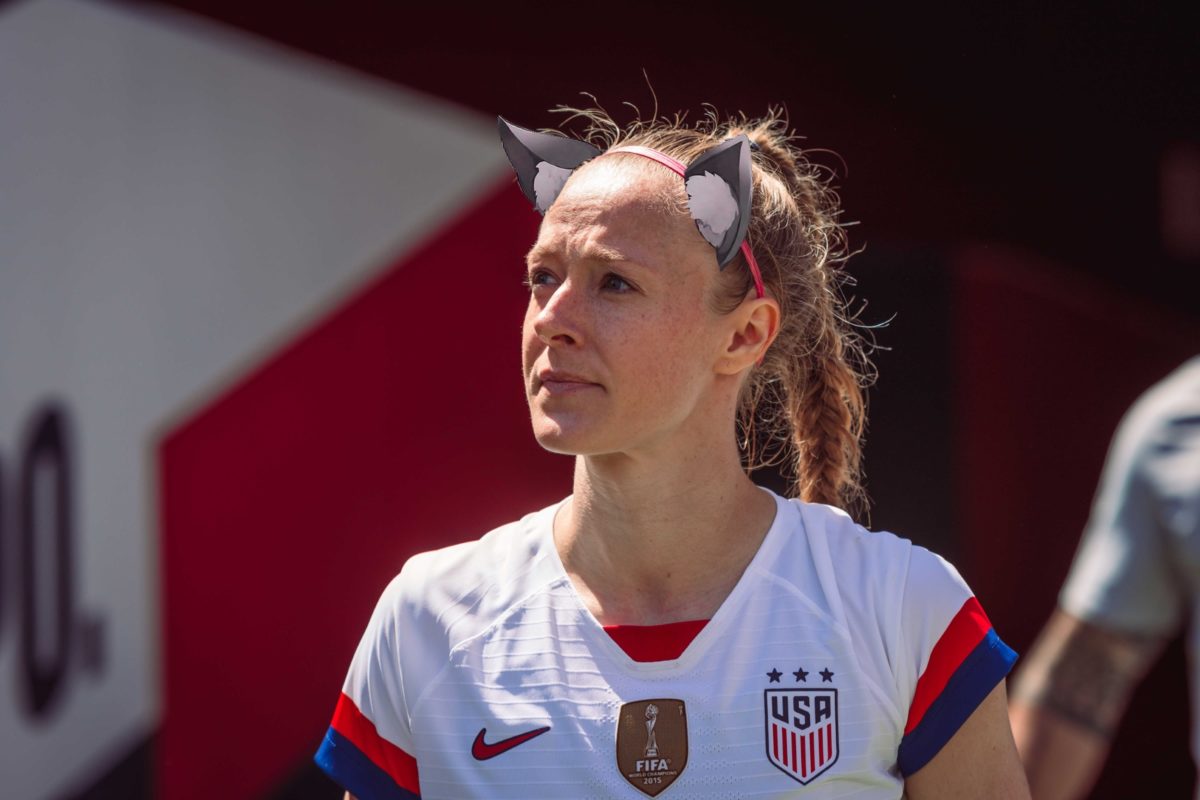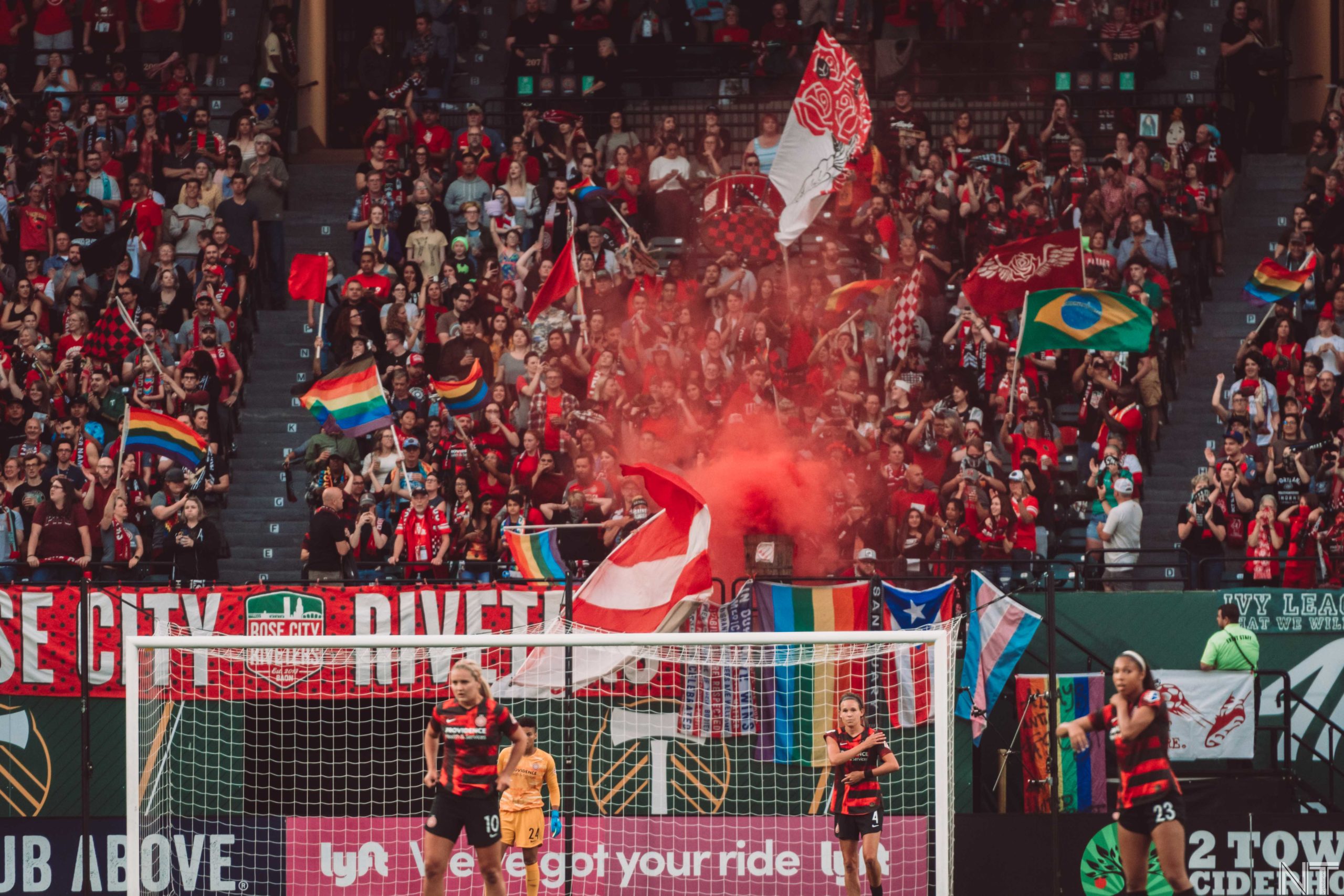The way the Portland Thorns ended their 2019 season was disappointing to everyone involved. With only one win and one goal in their final six games—and that nightmarish 6–0 loss to the North Carolina Courage—it was clear that the offseason would bring a number of changes.
“Short tournament [or] long season, our identity—especially after last year, where I think our identity had become very gray—our identity is our highest priority,” Thorns head coach Mark Parsons told media this week. “Because we think that leads to high performance, and we believe high performance leads to success.”
The player movement was as drastic as foreshadowed. Portland waived Ana-Maria Crnogorčević, and Dagný Brynjarsdóttir returned to Iceland. Emily Sonnett ventured southeast to the Orlando Pride. Caitlin Foord and Hayley Raso were lost to the Australian exodus from the NWSL. (Technically, Foord was also traded to the Pride, but the end result was the same.) Andressinha was finally freed—unfortunately, not from the bench, but from Portland. Midge Purce was sent to Sky Blue, Elizabeth Ball to Utah.
Then there were those brought into the team. Raquel Rodríguez and Becky Sauerbrunn came in via trade. At this year’s draft, the Thorns claimed first and second overall picks Sophia Smith and Morgan Weaver, as well as Meaghan Nally and Christen Westphal—the latter through a trade with then-Reign FC.
But where does that leave us? Without the likes of Ball, Purce, and Raso, for one thing—all players who had grown into key roles in their time with the club. And while—for the most part—the individual moves make sense on paper, the overall trend means most Thorns players are very young or nearing the end of their careers, with few individuals in between. The notable exception is the midfield, although questions remain about how exactly a partnership between Rodríguez and Lindsey Horan will work, and Gabby Seiler and Angela Salem are both working their way back from ACL tears.
With that in mind, it’s worth noting that the core of the Thorns is still very much intact, Sonnett excluded. Assuming everyone makes the trek to Utah, Adrianna Franch will still be in goal; Emily Menges will help anchor the backline; Horan, Tobin Heath, and Christine Sinclair are still key players in Portland’s attack.
But three of those players are over 30, as are Sauerbrunn and a handful of others. And while they’re all still effective on the field, they’ll likely be playing closely managed minutes—especially given the NWSL Challenge Cup’s compacted schedule.
Parsons addressed the challenges of training for a tournament in which his squad will be playing two games on short rest in the preliminary round alone—a number that will only grow as Portland advances through the Cup. “It’s not about getting every single player prepared and ready to play every single 90 minutes throughout this tournament,” he explained. “It’s not possible, it’s not going to be safe.”
In a sport where defensive consistency is key, it will be interesting to see how lineup rotation plays out across Portland’s backline—especially given that the majority of expected starters fall into the aforementioned age binary. Sauerbrunn, though still a solid player, has shown signs of slowing down, Meghan Klingenberg is now 31, and Katherine Reynolds—likely the first player off the bench in Ball’s absence—is 32.
On the other hand, there’s Ellie Carpenter, who has years of international experience, but also turned 20 just over a month ago. Seiler can also jump into defense if needed. Behind them, there’s a handful of players that are either coming off a 2019 season in which they barely played, or are new to the league altogether. (Although many of the former have looked solid in the time they have gotten, it remains to be seen how that translates as they begin to play more substantial minutes.)
“Every player knows they’re all going to be needed,” said Parsons. And while he’s done a phenomenal job in the player development department these past few years, that often entails gradually building game time—a luxury not afforded by the Challenge Cup schedule.
Portland’s youth is especially evident across its attacking line, with Smith, Weaver, and potentially a couple non-roster invitees joining the already-young group of Simone Charley, Marissa Everett, and Tyler Lussi. Based on the club’s preseason roster, the only real exception to this pattern is Christine Sinclair, although if the Thorns use their regular formation we’ll see Heath up there, too.
Regardless, there’s no way a 37-year-old Sinclair will play a significant role in every match, and all three of the players who stepped in as a No. 10 last year have since departed the team. That leaves a lot of Portland’s attack up to a handful of relatively inexperienced—though admittedly talented—individuals.
The other thing? The Thorns don’t get a preseason tournament this year. Parsons described that his communication with new players has catered to the lack of time to experiment. He explained the importance of establishing identity and expectations, clarifying where he sees a player helping the club, and that he wants the player to be “[themselves] in the rest of the areas.”
However, the lack of preseason opponents still presents questions for a team that likes to use that time allow players to showcase their strengths and test out prospective depth pieces.
“These players need minutes… to develop,” acknowledged Parsons. While the Thorns aren’t necessarily able to provide that time in preseason matches, Portland’s coaching staff has compensated with full-sided scrimmages.
Parsons remains optimistic about his group’s talent. Although preparation time is more limited, that a significant portion of the roster hasn’t played all that much in the NWSL means another thing: the Thorns will be harder to scout. “It’s an advantage that we know [our young players] and others don’t,” said Parsons, “and obviously we have a tournament [where] they’re gonna have to step up and step in. I’m confident that this experience is going to be a hugely positive one for them.”
However it shakes out, it’s pretty clear that that first match against North Carolina is going to be something—and that something will almost definitely sloppy and leave us with more questions than answers.
But despite the uncertainty, one thing is clear: what we see from the young players who are called to step into bigger roles during this tournament will be our first look at what this team can become.


